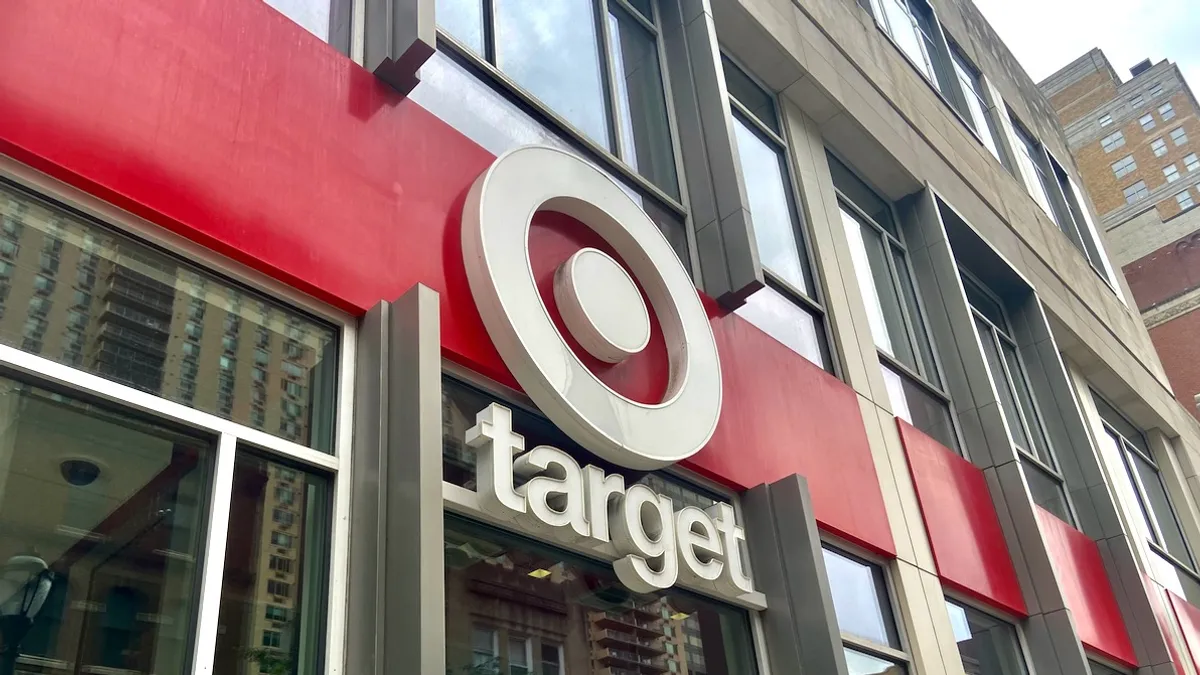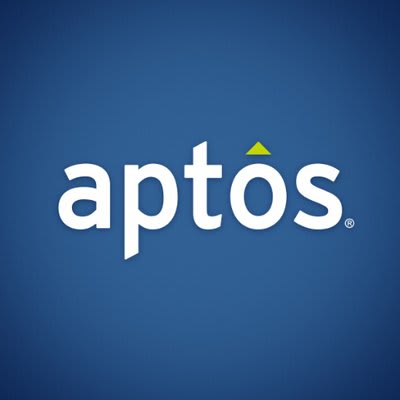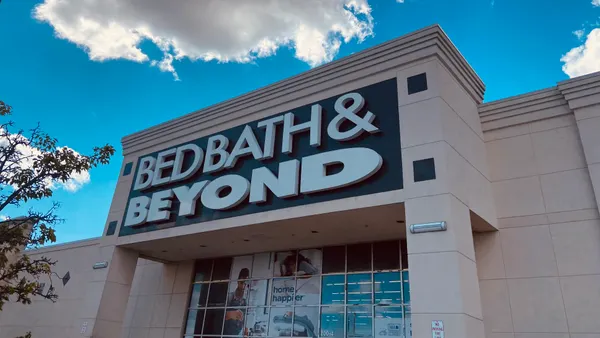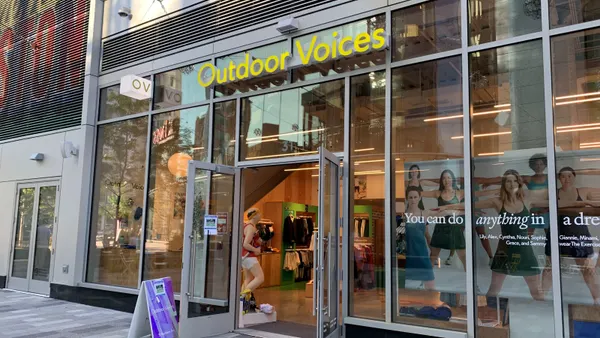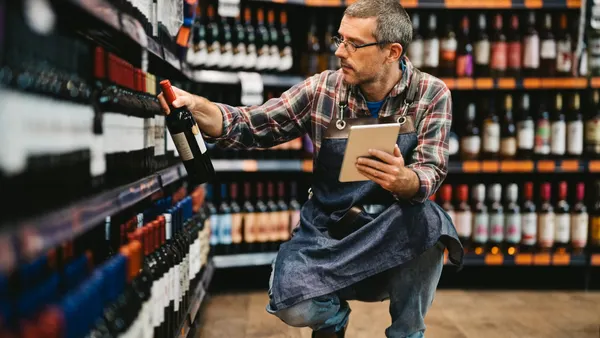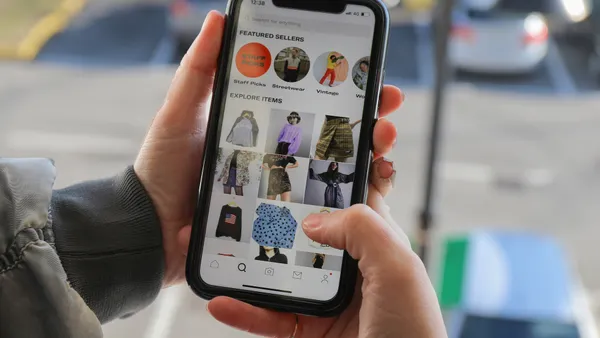Target says its food and beverage business is booming, with sales growing by more than $8 billion since 2019, to $24 billion, the retailer shared in a blog post and video August 7.
Food and beverage items are in more than 55% of shopper baskets, indicating that the grocery category helps drive trips to the retailer, John Conlin, Target’s senior vice president of merchandising for food and beverage, said in the video.
Digital grocery sales are also hot for Target. Online sales for food and beverages have grown more than tenfold since 2019. In fiscal Q1, Target’s digital comparable sales grew 1.4% compared to the same period last year, with pickup growth fueling the nearly 9% increase in same-day services.
Target’s grocery spotlight highlights improvements in a segment of the company’s business that has underperformed in the past, according to experts.
It also comes at a time when grocers and mass retailers are growing their private label food brands and seeking ways to appease consumers worried about high grocery prices.
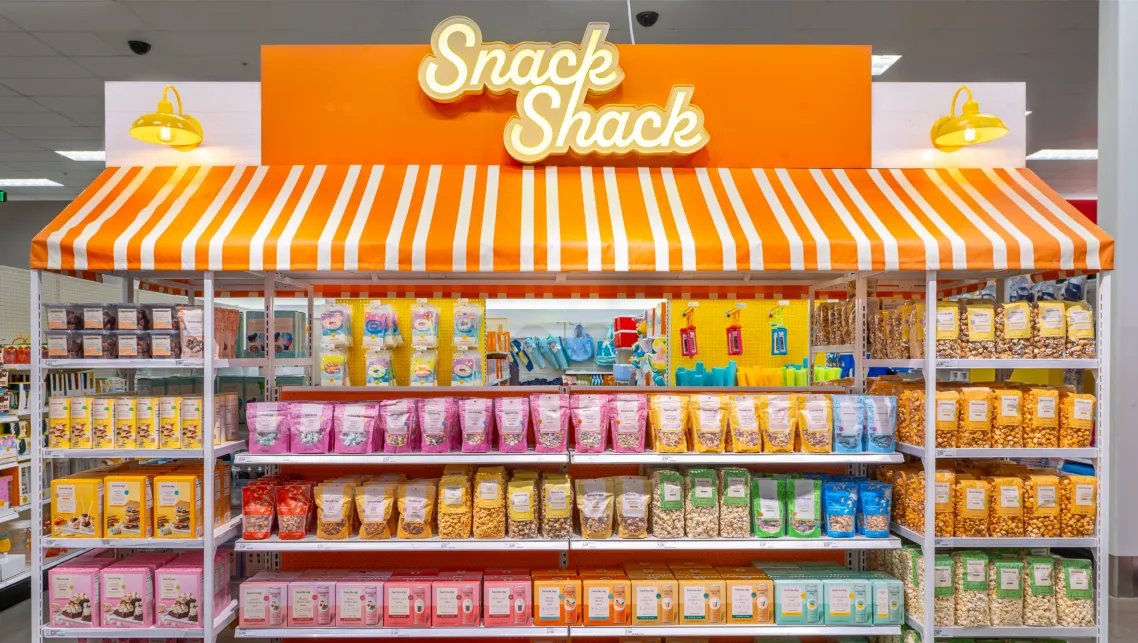
Aiming for a grocery bulls-eye
Target added groceries about 20 years ago and at first saw “lackluster” results, Rick Gomez, Target’s executive vice president and chief commercial officer, said in the video.
A multiyear effort that included rolling out same-day e-commerce services, hiring people with grocery expertise and building out private label has improved the retailer’s grocery sales, Gomez said. The retailer shifted from the mindset of “selling food to celebrating food,” Conlin said.
Now, Target is seeing “sustainable growth year after year” and gaining market share in food and beverage, Gomez said, adding, “There’s so much more runway ahead of us to grow this business.”
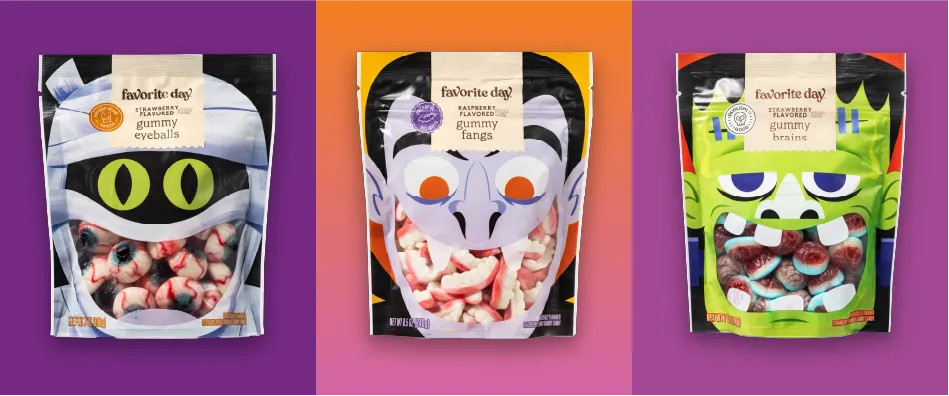
In late May, Target said it plans to cut prices on about 5,000 popular items across its assortment and has already reduced the prices of 1,500 items. The cuts will focus on nondiscretionary grocery, household, and health and beauty items under national labels and Target brands, like Good & Gather.
Target has also unveiled recent changes to leadership overseeing its food and beverage business. The company announced in June that Chief Marketing Officer Lisa Roath will become its chief merchandising officer of food, essentials and beauty, effective early next year. Gomez, previously the retailer’s chief food, essentials and beauty officer, became chief commercial officer in July.
Making private label shine
Target’s grocery strategy focuses on offering national brands, store brands and exclusive partnerships. Those partnerships have ranged from well-known names like British grocer Marks & Spencer and American actress Tabitha Brown to smaller and emerging brands such as New York-based Ghetto Gastro.
Private label, in particular, has become a key growth driver for Target.. Good & Gather, which launched in 2019, now rakes in nearly $4 billion in annual sales. The retailer also has its snacks and indulgences line, Favorite Day, and its Market Pantry line, which serves as the opening price point in a category.
“Food and beverage own brands are not just a replacement for national brands. We spend a lot of time understanding what consumers need,” said Jasmine Vasquez, Target’s vice president of food and beverage for its owned brand division, said in the video, noting that over 60% of private label items do not have a national brand equivalent.
Instead of the typical focus on sunscreen during the summertime, Target is adding more than 125 new items to its Favorite Day and Good & Gather brands, Target Executive Vice President and Chief Growth Officer Christina Hennington said during the company’s first-quarter earnings call in May.
Target also added more than 20 seasonal private label items, including apple pie-filled cookies, apple cider donuts, apple caramels and apple bourbon trail mix, to its fall assortment last year. Other seasonal private label items have included Halloween gummies, vanilla crème mini sandwich cookies with red, white and blue star decorations and Valentine’s Day sweets.
Peyton Bigora contributed reporting.



